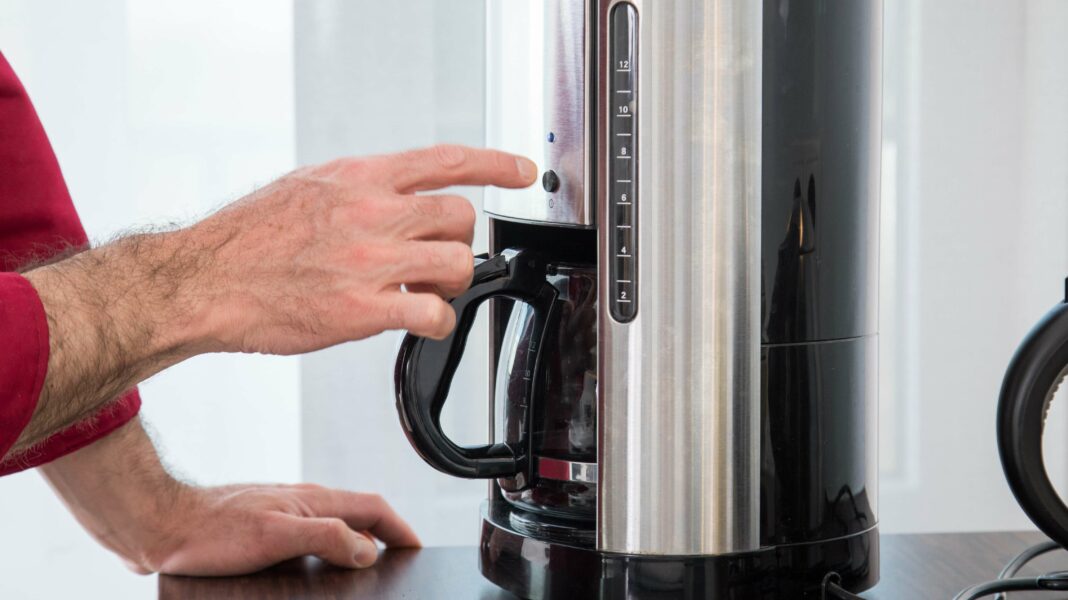Maintaining the cleanliness of your coffee machine is vital for optimal flavor and hygiene. Regular tasks include daily emptying and drying of the water tank, preventing mold growth, and ensuring milk components are sanitized. Monthly descaling is recommended, avoiding vinegar or citric acid. Automated cleaning cycles are helpful, but manual cleaning of specific parts like the brewing group is necessary to prevent residue buildup. Regular maintenance promotes better coffee quality and extends the machine’s lifespan.
Created with agency material
If your morning coffee has an unpleasant, stale taste, the culprit may be your coffee machine. Over time, limescale and old coffee remnants can build up inside, compromising flavor. However, this is just one of the many reasons why regular cleaning is essential. Other crucial considerations include preventing mold growth and reducing electricity costs.
The Importance of Daily Coffee Machine Cleaning
Removing Limescale
According to Holger Preibisch, managing director of the German Coffee Association, “Many scaled machines produce water that is too hot.” This occurs because limescale prevents the machines from properly regulating water temperature, and limescale can accumulate wherever water is used.
Experts and coffee machine manufacturers recommend that users empty the water tank every day and dry it thoroughly. This practice not only helps maintain optimal coffee flavor but also ensures that fresh water is used each time.
Preventing Mold Growth
While flavor might seem like the top priority, there’s an even more pressing reason to clean your machine daily: the potential for mold and bacteria growth, which can be harmful to your health over time.
Moist coffee residues can promote mold growth in areas like the grounds container and the drip tray. Additionally, oils and fats from coffee can accumulate here. For capsule and pod machines, it’s advisable to empty the tray after each use, as suggested by Theresa Seitz, a consultant for household small appliances at the Association of Electrical and Digital Industry (ZVEI).
This guideline also applies to coffee filters, which should be removed from their holders after brewing. It’s best to empty filter coffee carafes daily to prevent leftover coffee from drying out, making cleaning more difficult.
Attention to Milk Components
The milk frother, milk tank, and associated hoses are particularly susceptible to bacteria. “Germs thrive wherever milk is left unattended,” warns Holger Preibisch.
For machines with side milk frothers, these components can often be unscrewed, soaked in a cleaning solution, and rinsed with clean water. Many machines have built-in reminders for this cleaning process. Experts recommend rinsing the milk tank and hoses daily to ensure hygiene.
Additional Maintenance Tasks for Your Coffee Machine
Monthly Descaling
In addition to daily cleaning, a thorough descaling should be performed about once a month. This process is straightforward: simply add a descaling agent to the filled water tank and run a cleaning program or the normal preparation cycle.
However, Theresa Seitz advises against using vinegar or citric acid for descaling, as they can shorten the lifespan of the machine by damaging seals and hoses. Vinegar, in particular, can harm the plastic components.
Utilizing Cleaning Cycles
Many fully automatic coffee machines come with built-in reminders for self-cleaning cycles. “These cycles generate enough pressure and heat to effectively clean the internal components,” notes Seitz.
Nevertheless, additional cleaning agents are still necessary to break down fats and oils effectively. Depending on the manufacturer, these can come in the form of tablets or powder that needs to be dissolved in water before use. Fully automatic machines typically have a designated area for the tablet, while portafilter machines require the powder or tablet to be placed in the filter holder.
Hand Cleaning Components
Even with automated cleaning processes, some parts still need to be cleaned manually. For instance, the brewing group, which is essential for the machine’s operation, can usually be removed and rinsed under running water. Regularly performing this step helps prevent stubborn residue build-up.
In portafilter machines, a blind filter can be used for cleaning the brewing group. “This filter has no holes, allowing hot water to be backwashed through with pressure,” explains the coffee expert.
For portafilter and filter machines, if fats become stuck on the filter and holder, a brief soak in a hot water bath with coffee cleaner can be effective. To prevent deposits, it’s best to rinse the filter with water after each use, as advised by Preibisch.
Cleaning Before Each Refill
Fats can also accumulate in the containers for beans or ground coffee. The empty bean container should be removed and wiped clean with a slightly damp cloth. Most containers are not dishwasher-safe, as the plastic can lose clarity over time. It’s crucial to ensure that the container is completely dry before refilling.
